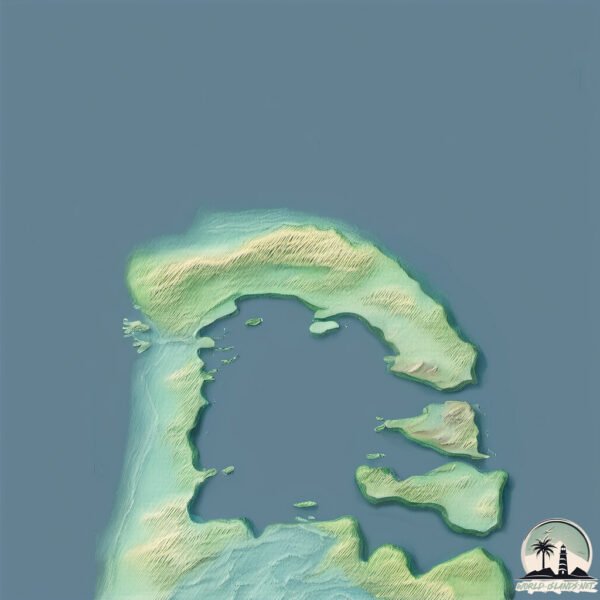Welcome to Wiegand Island , a Polar island in the Hudson Bay, part of the majestic Arctic Ocean. This guide offers a comprehensive overview of what makes Wiegand Island unique – from its geography and climate to its population, infrastructure, and beyond. Dive into the details:
Geography and size of Wiegand Island
Size: 36.5 km²Coastline: 52.9 kmOcean: Arctic OceanSea: Hudson BayContinent: North America
Wiegand Island is a Medium Island spanning 37 km² with a coastline of 53 km.
Archipel: –
Tectonic Plate: North America – Covers North America and parts of the Atlantic and Arctic Oceans, characterized by diverse geological features and varying levels of seismic activity.
The geographic heart of the island is pinpointed at these coordinates:
Climate and weather of Wiegand Island
Climate Zone: PolarClimate Details: TundraTemperature: Cold
Climate Characteristics: The tundra climate features long, extremely cold winters and short, cool summers. Vegetation is limited to mosses, lichens, and small shrubs due to the low temperatures and short growing seasons. Biodiversity is low, but some specialized species thrive.
Topography and nature of Wiegand Island
Timezone: UTC-05:00Timezone places: America/New_YorkMax. Elevation: 74 m Mean Elevation: 30 mVegetation: Herbaceous CoverTree Coverage: 13%
The mean elevation is 30 m. The highest elevation on the island reaches approximately 74 meters above sea level. The island is characterized by Plains: Flat, low-lying lands characterized by a maximum elevation of up to 200 meters. On islands, plains are typically coastal lowlands or central flat areas.
Dominating Vegetation: Herbaceous Cover
Vegetation: 4 vegetation zones – Diverse Island
Infrastructure and Travelling to Wiegand Island
Does the island have a public airport? no .
Does the island have a major port? no .
The mean population of Wiegand Island is 23 per km². Wiegand Island is Gently Populated. The island belongs to Canada .
Continuing your journey, Renouf is the next notable island, situated merely km away.
Crazy River - Tropical Islands - Reifenrutsche von Wiegand | POV
Crazy River - Tropical Islands - Reifenrutsche von Wiegand | POV ▻▻▻ Abonnieren / Subscribe: ...
Crazy River - Tropical Islands - Reifenrutsche von Wiegand | POV
Crazy River - Tropical Islands - Reifenrutsche von Wiegand | POV ▻▻▻ ...
Crazy River - Tropical Islands - Reifenrutsche von Wiegand | POV ▻▻▻ Abonnieren / Subscribe: ...
Grosswasserrutsche - Tropical Islands - Mega lange und spaßige Rutsche von Wiegand | POV
Grosswasserrutsche - Tropical Islands - Mega lange und spaßige Rutsche ...
Grosswasserrutsche - Tropical Islands - Mega lange und spaßige Rutsche von Wiegand | POV ▻▻▻ Abonnieren / Subscribe: ...
Living On Entrepreneurship Island Presenter Billie Wiegand
Billie Wiegand with Mountain Pine Studios talks about her presentation ...
Billie Wiegand with Mountain Pine Studios talks about her presentation for the conference.
Canada is classified as Developed region: G7: Group of Seven – Major advanced economies, including Canada, France, Germany, Italy, Japan, the United Kingdom, and the United States. The level of income is High income: OECD.
News – Latest Updates and Headlines from Wiegand Island
Stay informed with the most recent news and important headlines from Wiegand Island. Here’s a roundup of the latest developments.
Loading...
Please note: The data used here has been primarily extracted from satellite readings. Deviations from exact values may occur, particularly regarding the height of elevations and population density. Land area and coastline measurements refer to average values at mean high tide.

